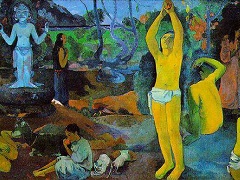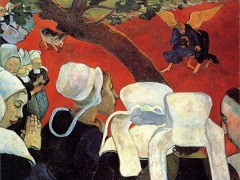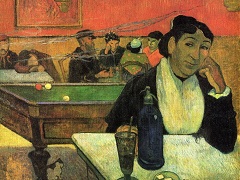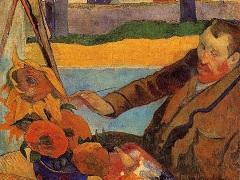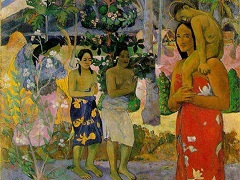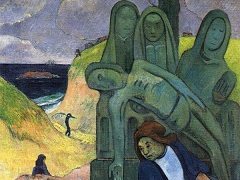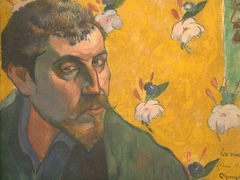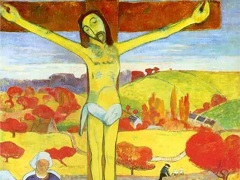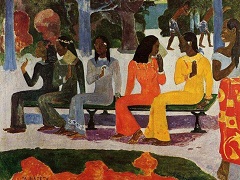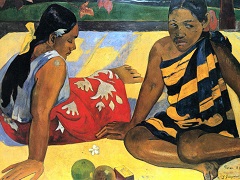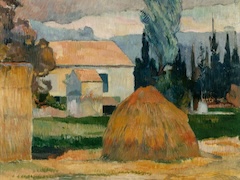Tahitian Women, 1891 by Paul Gauguin
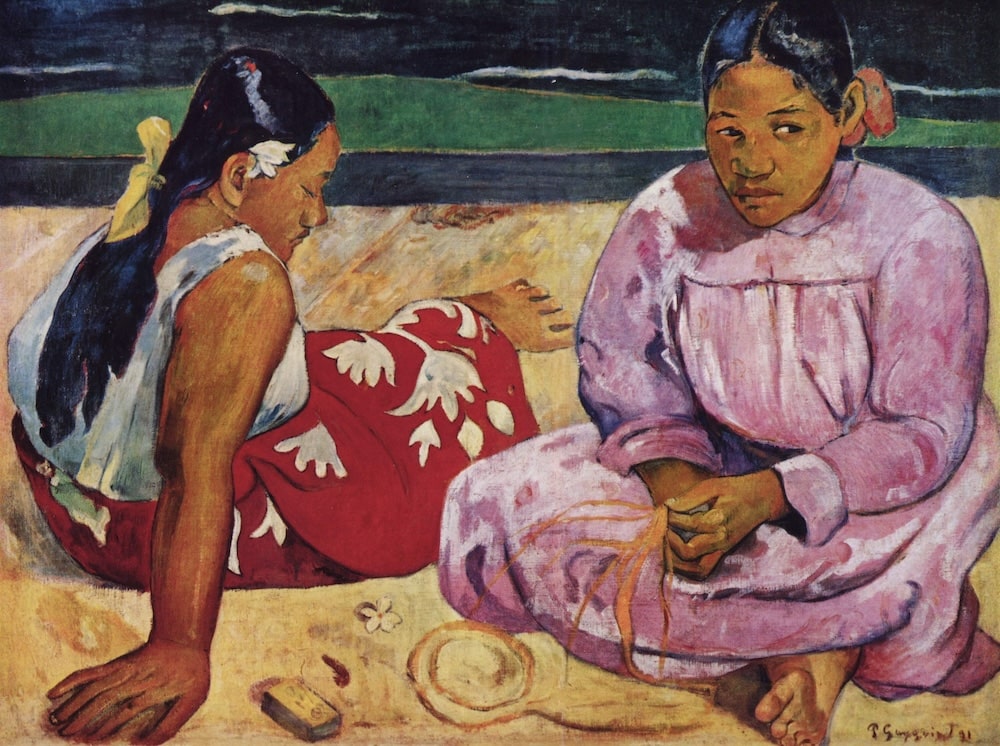
How to combine solid form and flat pattern - this seems the problem the Post-Impressionists so often posed for themselves. Seurat solved it through pointillism, Cezanne by employing color modeling. In this painting Gauguin, who so frequently uses the composition of the flowing frieze to this same end, has joined solidity and surface by other means.
The view from above both foreshortens the figures and eliminates the horizon, thereby bringing the background forward. The figures themselves, close to the eye, create a pattern of curved forms that contrasts with the straight, simple lines of the shore beyond. Being so near, filling so much of the area, they are both on the surface and in depth, both flat and modeled. The fusion of the two is especially clear in the woman on the left whose profile and arm make one continuing vertical contour as her extended leg and skirt make a horizontal one, both also functioning as receding diagonals, while at the same time the foot balances the hand close up in the corner. Thus the large color areas, bound together by strong outlines that, through overlapping, create an abstract pattern, are also used to model and give weight to the heavy bodies.

